100 Years After the Titanic Disaster This Family Recieved a Suprising Letter
One hundred years after the tragedy, academics are investigating a message in a bottle allegedly thrown from the Titanic just hours before the 882ft liner sank. The note, written by 12-year-old Mathilde Lefebvre, was found in Canada in 2017 and is now being studied to determine if it is authentic.
Have researchers found the first Titanic artifact from the American coast? Join in their investigation to uncover the truth!
Unbelievable Message in a Bottle Washes Up After 100 Years
In an incredible twist of fate, a message in a bottle purported to have been thrown from the deck of the Titanic has been discovered in Canada more than a century later. Scientists are now investigating the authenticity of the bottle’s contents, which could provide new insight into the fate of the ill-fated luxury liner.
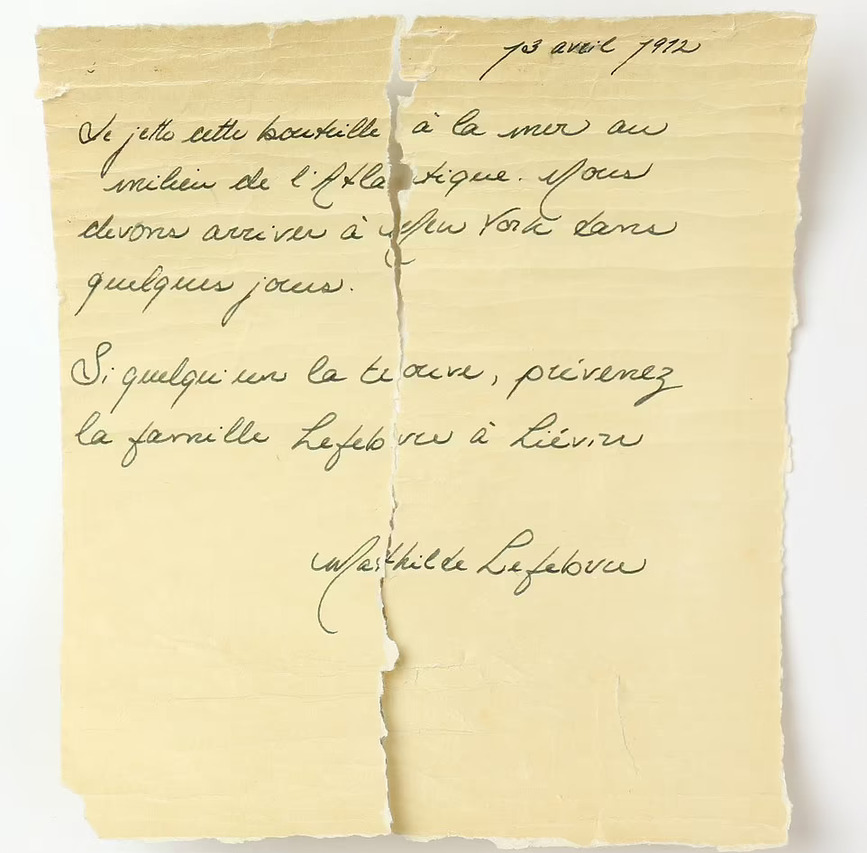
Source: Nicolas Beaudry-UQAR/Pen News
The bottle is believed to have been thrown overboard as the Titanic travelled on its maiden voyage in 1912, before washing up on the shores of Canada in 2017. If true, this would be one of the most incredible stories of survival in maritime history, sending shockwaves around the world and rewriting history as we know it.
An incredible discovery made waves this week when Nicolas Beaudry of the “Université du Québec à Rimouski” worked to confirm the authenticity of the world’s oldest message in a bottle. Found in a bottle that had been lost at sea for over 100 years, the note has been carefully analyzed by experts who were able to confirm its age.

Source: the-sun.com
Beaudry, who is the lead researcher on the project, said the note could be authentic and is an incredible find. It’s an exciting discovery that has captivated the public, and experts are hoping to learn more about the message and the person who wrote it.
On April 15, 1912, the British liner Titanic met its tragic end following a collision with an iceberg in the Atlantic Ocean. Mathilde and 1,500 other helpless passengers had no choice but to perish in the icy waters. Little did anyone know that a message from Mathilde would resurface years later.
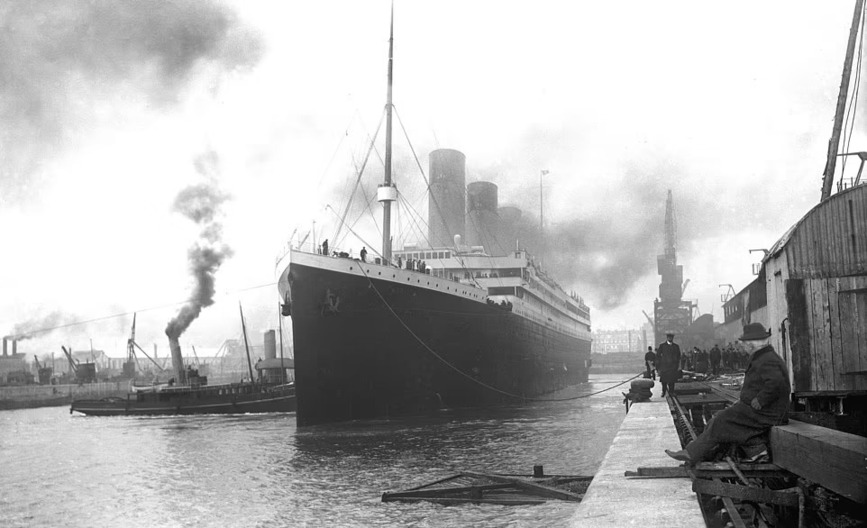
Source: the-sun.com
In 2017, a bottle containing a message from Mathilde washed up on a beach in Canada. The discovery of this forgotten message revealed a piece of history that was previously thought to be lost forever. It was a remarkable reminder of the Titanic’s tragic story and the lives of those who were on board.
Mathilde's Message in a Bottle Found 105 Years After Titanic Sailed
105 years after the Titanic set sail on its fateful voyage, Mathilde’s message in a bottle was discovered in the Bay of Fundy, Canada. On April 10, 1912, the Titanic left Southampton, England, with its passengers filled with the joys of a new adventure. Little did they know that five days later, the Titanic would hit an iceberg, leading to the loss of more than 1,500 lives.
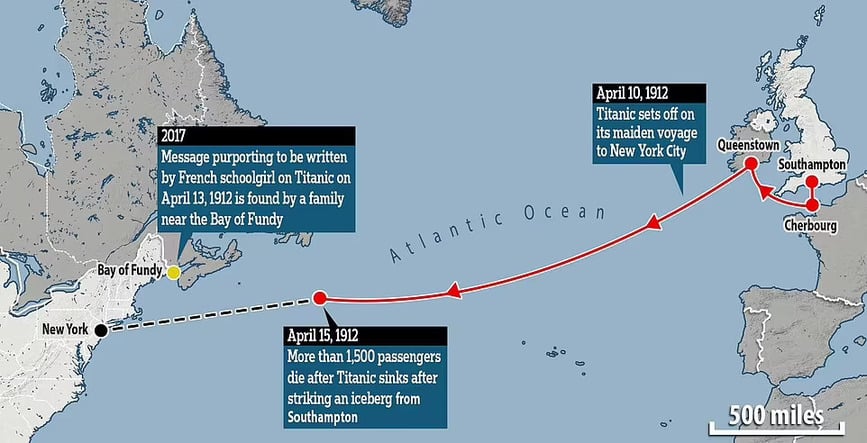
Source: the-sun.com
But Mathilde’s message, thrown into the sea in a bottle as a gesture of hope and courage, was eventually found in 2017. It served as a reminder of the tragedy that happened so many years ago, and the courage of those on board.
Unsolved Mystery: Mathilde Lefebvre's Note from 1912
On April 13, 1912, a mysterious note was written by a French schoolgirl named Mathilde Lefebvre. She was only 12 years old and was travelling to New York City with her mother Marie. Mathilde was planning to visit her father and siblings there.
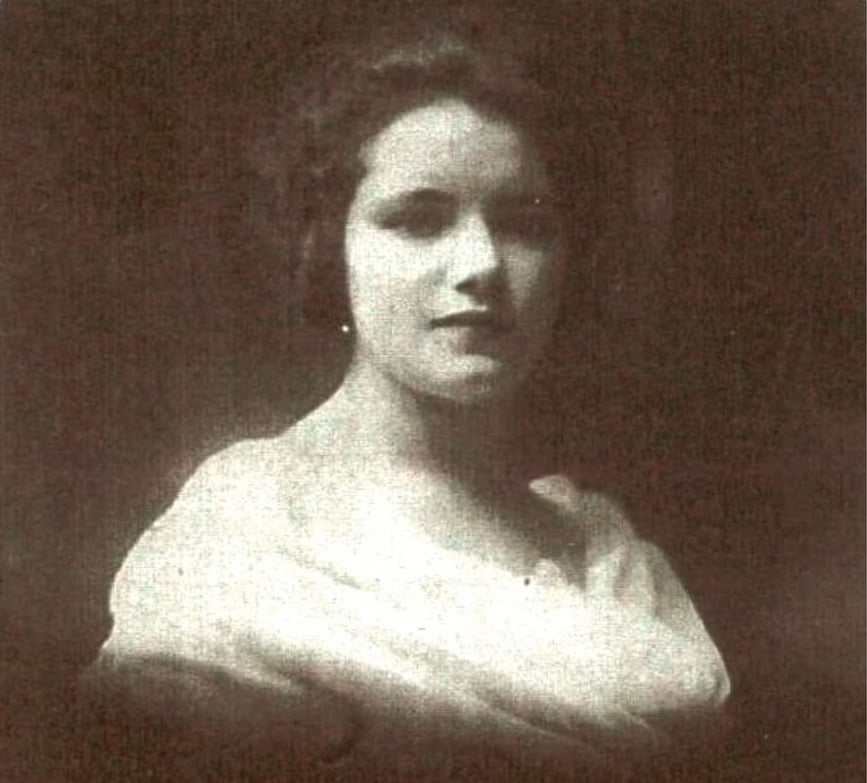
Source: the-sun.com
What was the content of this note and why was it written? To this day, this note remains an unsolved mystery. Could it be the key to uncovering Mathilde’s story? We may never know, but one thing’s for sure, the note continues to captivate the imaginations of many!
A Message in a Bottle Unveiled after Spectroscopy
A message in a bottle has been discovered on a beach in New Brunswick, Canada, in 2017. What was written inside it? Scientists are finding the answer with a special technique called spectroscopy. This method uses light to analyze the chemical composition of the ink and paper used in the message.
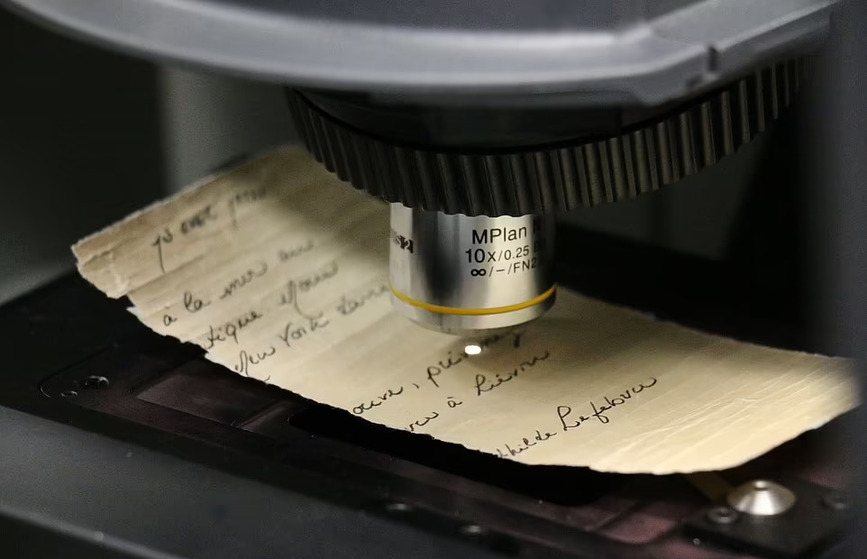
Source: Maxime Gohier-Nicolas Beaudry-UQAR/Pen News
It is an exciting way to uncover the secrets of the past and to explore the stories of those who came before us. The results of the spectroscopy are still unknown, but they will surely bring us closer to understanding the underlying message in the bottle. In the meantime, we can dream of the possibilities that this mysterious bottle may hold. What stories will it tell us?
Nicolas Beaudry Examines a Mysterious Document
Nicolas Beaudry is on a mission to uncover history – examining a mysterious document written by Mathilde Lefebvre. This document could potentially reveal secrets from the past, which have been hidden for years.
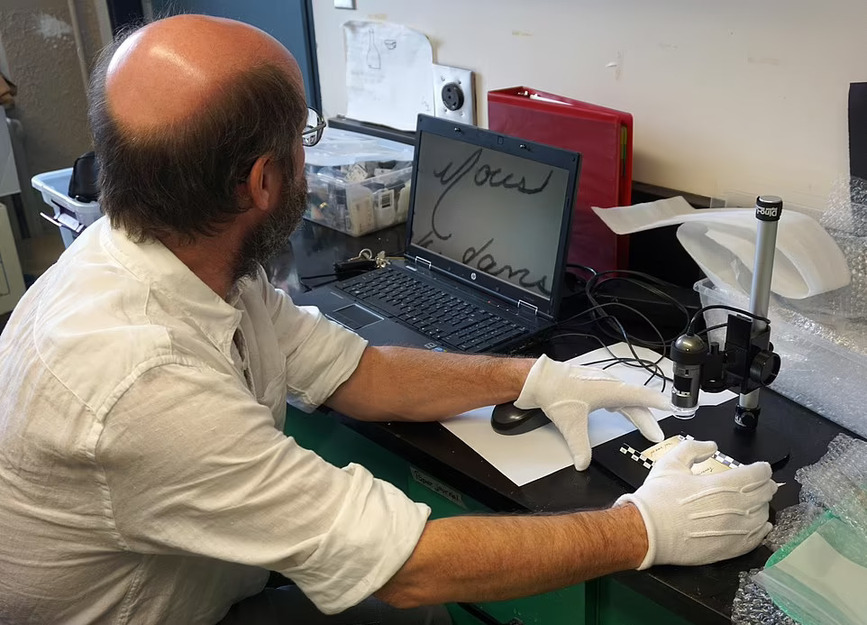
Source: Nicolas Beaudry-UQAR/Pen News
Beaudry’s curiosity is palpable as he examines the document with scrutiny, looking for any clues to its origin and purpose. Could this piece of paper hold the key to unlocking a long-forgotten story? Or will it all remain a mystery? With Beaudry’s dedication, he hopes to uncover the truth and bring history back to life!
Couple's Incredible Discovery Leads to a Life-Changing Moment
Daniel Bourgault and El Hadi Cherfouh were exploring the area near their home when they made an incredible discovery. The couple, accompanied by El Hadi’s wife Nacera Bellila, stumbled upon a bottle with a message inside. Little did they know that this seemingly ordinary find would lead to an extraordinary journey.

Source: cbc.ca
When the message revealed a heartfelt plea for help, the trio set out to make a difference. With their mission to bring hope to those in need, they embarked on a life-changing endeavor. And while they may not have known the outcome of their mission, they knew one thing for sure: they were determined to make a difference.
The Unparalleled Majesty of RMS Titanic
The RMS Titanic was a feat of unparalleled majesty, constructed between 1909 and 1912 by renowned shipbuilders Harland and Wolff in Belfast. At the time of her creation, she was the largest ship afloat. She had an overall length of 882.5 feet, and a gross tonnage of 46,328.
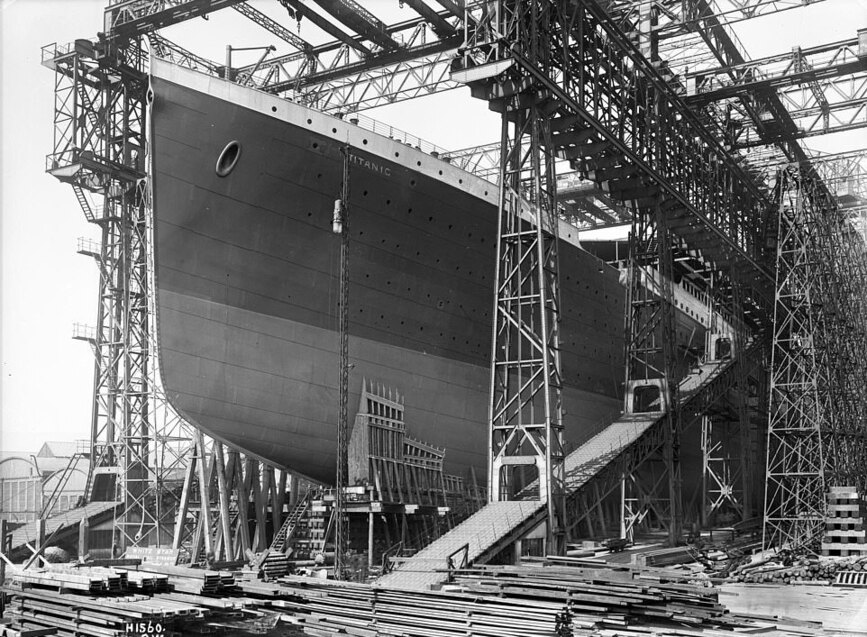
Source: Public Domain/Robert John Welch/Harland & Wolff
Her sheer size and grandeur made her a sight to behold, a true symbol of luxuriousness and the pinnacle of maritime engineering. As the Titanic set sail on her maiden voyage, she was seen as a symbol of wealth, power, and prestige. Unfortunately, her voyage ended in tragedy, but her legacy and grandeur will never be forgotten.
Step into the Grandeur of the Titanic
Embark on a journey to the past and experience the grandeur of the Titanic! Owned and operated by White Star Line, the passenger’s vessel set sail on her historic maiden voyage from Southampton to New York on April 10, 1912.
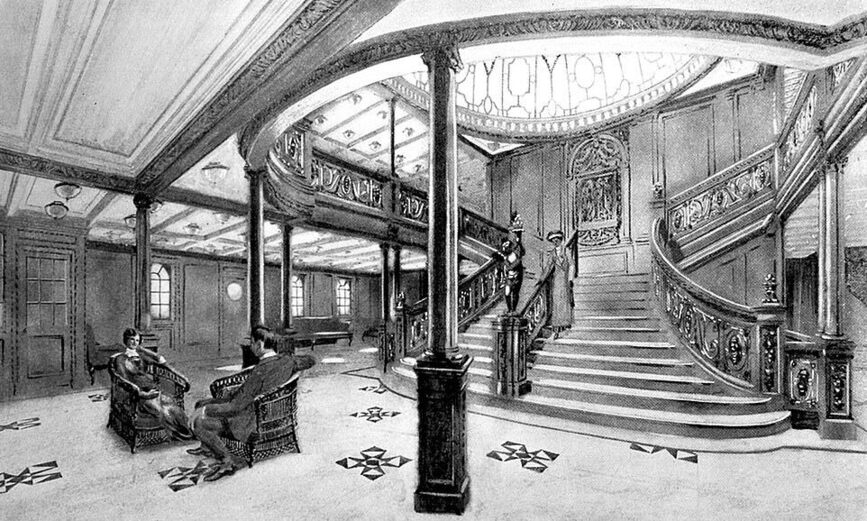
Source: Public Domain/White Star Line
The ship’s most remarkable feature was its grand staircase, which served as a majestic reminder of the luxury and opulence of its time. Take a step into the past and explore the breathtaking wonder of the Titanic’s grand staircase with this iconic illustration of the ship.
The Titanic: An Unsinkable Legend
The RMS Titanic, constructed by Belfast-based shipbuilders Harland and Wolff between 1909 and 1912, was a sight to behold. At the time, it was the largest ship afloat and was the epitome of luxury and grandeur. During its sea trials, the Titanic was a sight to behold as it sailed over the waves with elegance and pride.
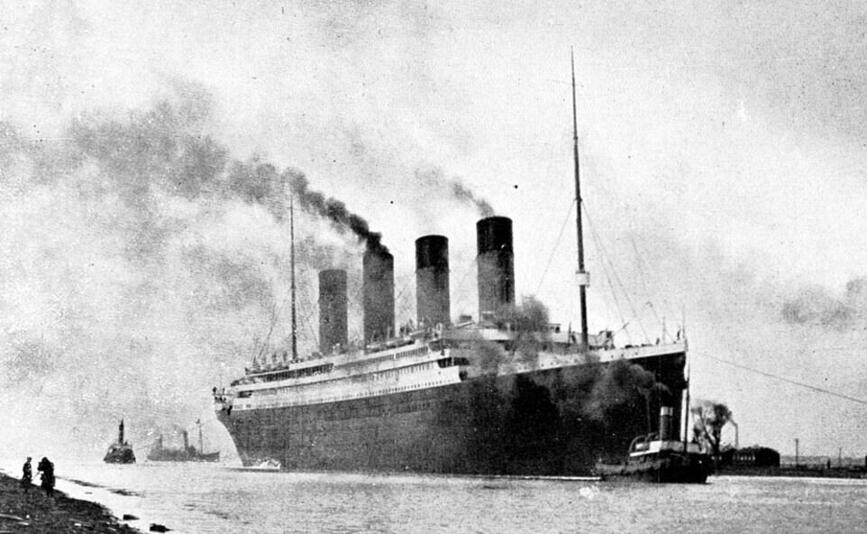
Source: Public Domain
Relaxing Aboard the Titanic: A Pool Fit for Royalty
The majestic Titanic, owned and operated by the White Star Line, set sail on her maiden voyage from Southampton to New York on April 10, 1912. On board, passengers were able to enjoy a level of luxury that was previously unheard of. One of the highlights was the breathtaking pool, a stunning area where passengers could relax, unwind and take in the grandeur of their oceanic voyage.
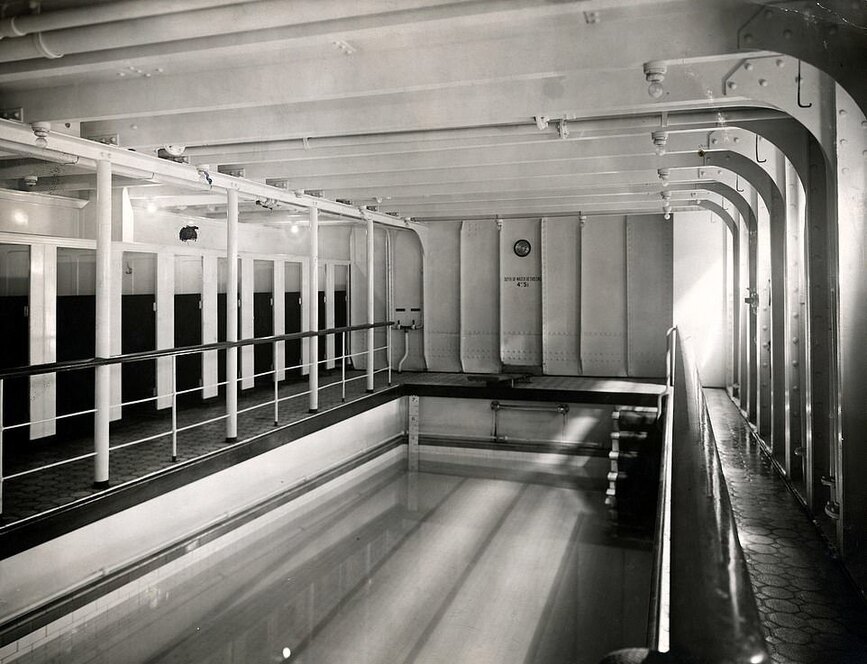
Source: Public Domain/Bernard Walker
With its intricate tiling and classic decor, the pool was fit for royalty, and it was a highlight for many of the passengers. Even today, over a century later, the Titanic’s pool stands as a testament to the grandeur of this iconic vessel.
Unimaginable Loss - The Sinking of the RMS Titanic
On the 15th of April 1912, the world was rocked by tragedy as the luxurious RMS Titanic, the pride of the White Star Line, tragically sank. After two and a half hours, the ship broke into two sections and sank to the bottom of the ocean floor, around a third of a mile apart.
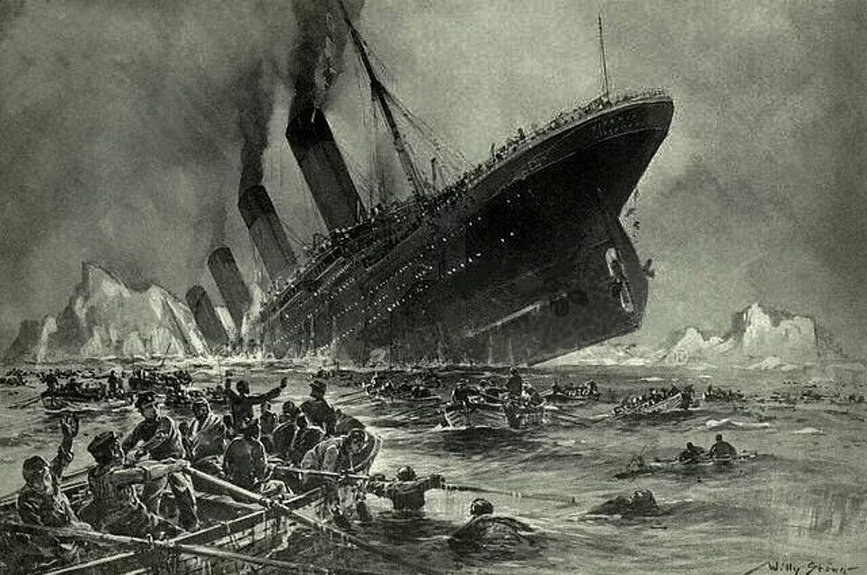
Source: Public Domain/Willy Stöwer
This disaster claimed the lives of 1,500 people, making it one of the worst maritime disasters in history. This heartbreaking event stands as a reminder of the fragility of life, and the importance of cherishing each and every moment.
Tragedy of the Titanic: Unveiling its Final Voyage
The Titanic has gone down in history as one of the most tragic shipwrecks of all time. On April 15, 1912, it met its fate when it collided with an iceberg in the North Atlantic, 350 nautical miles off the coast of Newfoundland, Canada.

Source: MailOnline
Before its fateful end, this luxurious liner made two brief stops – one at Cherbourg in France and the other in Cork Harbour, Ireland. The Titanic’s final voyage was one that was full of promise and potential but ended in tragedy. Today, it lies at the bottom of the sea, a reminder of the power of nature and the fragility of human life.
Titanic: From Cherbourg to Cork Harbour
The majestic Titanic embarked on an Atlantic voyage, with two brief stops en route – the first being in the French port of Cherbourg and the second in Cork Harbour, Ireland. Here, ferry boats conveyed passengers on and off the celebrated liner.
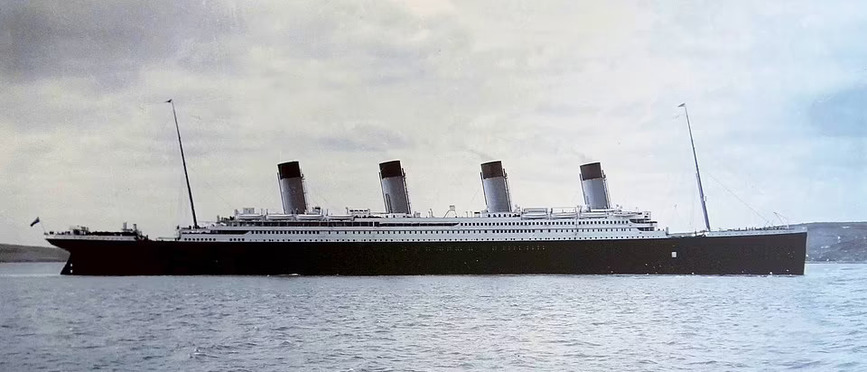
Source: Public Domain
As the Titanic glided through the waters, the passengers marveled at the incredible experience of a lifetime. With the promise of a new horizon ahead, the voyage was a chance to make memories that would last forever. From the port of Cherbourg to Cork Harbour, the Titanic sailed with optimism and hope of a journey that would be remembered for years to come.
Unsuspecting Disaster: The Titanic Meets Its Fate
It seemed like any regular night on the Titanic. However, a fateful event was about to take place. At 23:40 local time, the Titanic collided with an iceberg and six narrow openings were generated in the starboard hull, due to the rivets snapping.
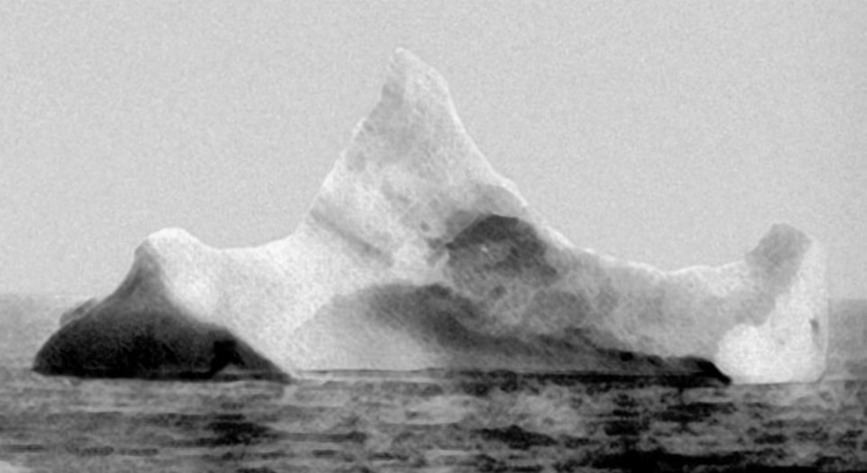
Source: Public Domain
This incident proved to be a disaster that the passengers of the Titanic were not prepared for. The iceberg pictured here was the one that would sink the Titanic, and will forever be remembered in history.
The Titanic's Maiden Voyage - A Journey To Remember
On April 10th, 1912, the majestic Titanic set sail from Southampton to New York, with stops at Cherbourg and Cork along the way. As the vessel glided through the ocean, Marconi Company radio officers on board the Titanic received multiple warnings about ice in the vicinity.

Source: travel.nine.com.au
Unfortunately, not all of these warnings were conveyed to the crew. The Titanic’s maiden voyage was a voyage to remember – from the warnings of danger to its eventual demise, the voyage of the Titanic is one of the most iconic events in history.
Titanic’s Tragic End - The Unsinkable Ship Sank in 3 Hours
At just before midnight on April 14, 1912, a fateful encounter with an iceberg changed the course of history. The RMS Titanic, on its maiden voyage from Southampton to New York, was struck and within three hours had sunk beneath the freezing Atlantic Ocean, claiming the lives of over 1,500 people.
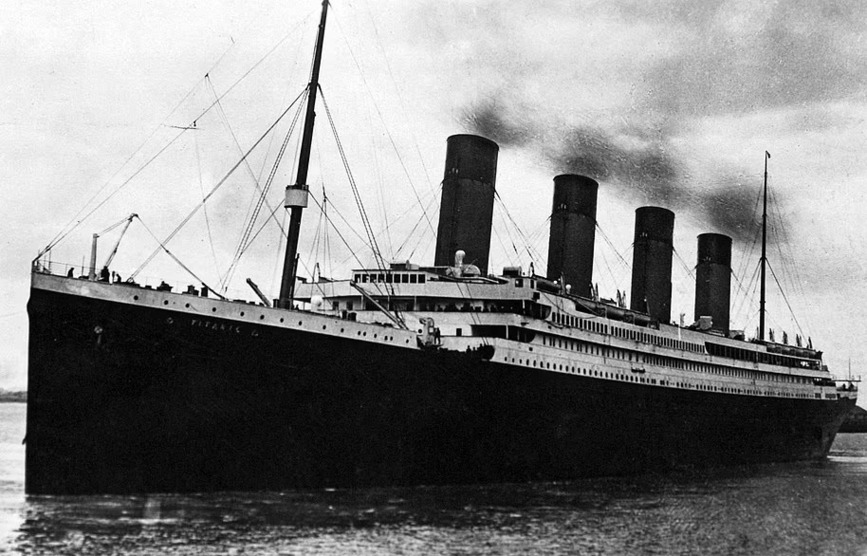
Source: arabic.rt.com
Lookout Frederick Fleet spotted the iceberg dead ahead and the ship managed to avoid a direct collision, though the ‘glancing blow’ was enough to cause its eventual sinking. Captain Edward Smith issued an order to abandon ship and sent out distress signals, but it was too late. On this night, the ‘unsinkable’ Titanic met its tragic end.
The Last Hours of the Titanic
The magnificent Grand Staircase of the Titanic was a sight to behold. Built from English solid oak and accented with wrought iron, the glass domes above were designed to let in natural light.
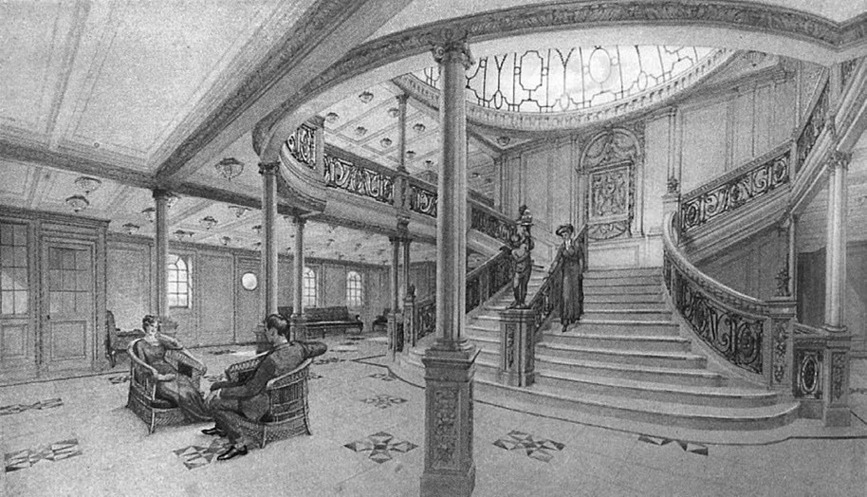
Source: Pen and Sword
On April 15th, at 2:05 am, the final lifeboat was launched, and only ten minutes later, the Titanic’s angle in the water increased rapidly. In a matter of moments, the ship was completely submerged in the icy Atlantic waters, sadly coming to an end two hours and forty minutes after hitting the iceberg.
Survivor of the Titanic: Hyman's Story
On the night of April 14th, 1912, lookout Frederick Fleet spotted an iceberg, ringing the ship’s bell in a warning. The massive ocean liner, the Titanic, changed direction but it was too late. The iceberg gauged a huge opening in the hull, causing the ship to sink beneath the waves within two-and-a-half hours.

Source: Pen and Sword
Hyman, a third-class passenger of the Titanic, was in bed when he felt the jolt of the ship hitting the iceberg. He soon realized the severity of the situation, dressed, and headed to the top deck. After the disaster, Hyman went on to set up a delicatessen in Manchester. His incredible story of survival remains a testament to the bravery of the passengers and crew of the Titanic.
Adolf Saalfeld's Plush Surroundings on the Titanic: From Soup to Sinking
Engaging Text: Adolf Saalfeld was called a ‘first-class passenger’ on the Titanic, but the experience he encountered was anything but first-class. From the luxurious lunch of ‘soup, fillet of plaice, a loin chop with cauliflower and fried potatoes’ to the ‘pitiful cries’ as the ship sank, Saalfeld endured a range of emotions and experiences that stayed with him for the rest of his life.

Source: Pen and Sword
His 65 glass bottles of perfumes were even recovered from the Atlantic sea bed in 2000! Join us as we explore the story of Adolf Saalfeld’s journey on the Titanic.
Harold Bride: The Titanic Survivor Who Faced Death and Survived
Harold Bride, born in 1890 in Nunhead, South-East London, was a Marconi Wireless operator before becoming a junior officer on the Titanic. Bride remembered how he didn’t feel the shock of the iceberg striking the ship, but heard a ‘terrible confusion’. After being ordered to send out a distress call by the captain, Bride was hauled into a lifeboat and survived the disaster.
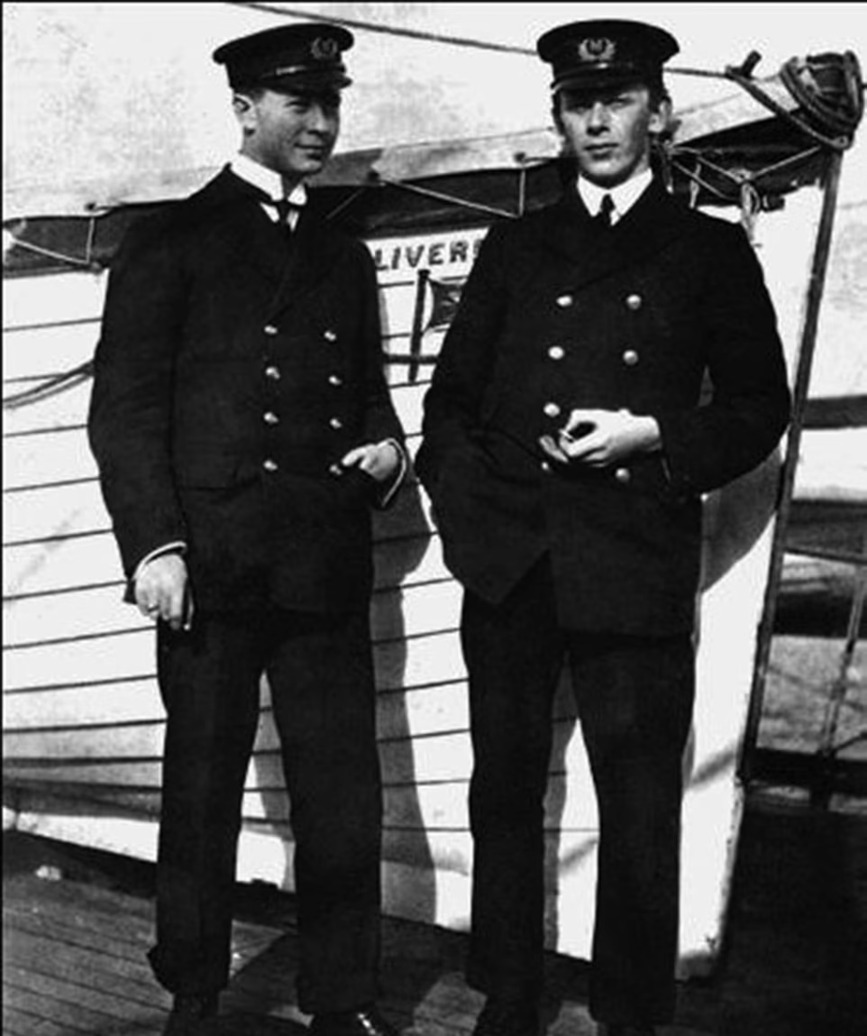
Source: Pen and Sword
He later recalled being ‘very cold’ before the Carpathia came to their rescue. After arriving in New York, Bride spent some time in hospital due to his badly frozen and crushed feet. Despite facing death, Bride was able to survive the disaster and live to tell the story.
The Unsinkable Titanic: A Giant of the Sea
The Titanic was a true giant of the sea. When it first entered service, it was the biggest ship in the world, and it was the second of three Olympic-class vessels operated by the White Star Line.

Source: Pen and Sword
Pictures show the Titanic being pulled out of Belfast harbour during its sea trials, a momentous occasion that marked the beginning of its grand journey. The Titanic would go on to become one of the most iconic ships in history, and its legacy lives on today.
Titanic's Final Journey: Captain Smith's Last Stand
As the Titanic slowly sank into the depths of the Atlantic Ocean, Captain Edward Smith went down with his ship. Ship steward Tom Whiteley, who had been hauled into a lifeboat, described the last moments of the majestic vessel as “just like a duck does that goes down for a dive”.
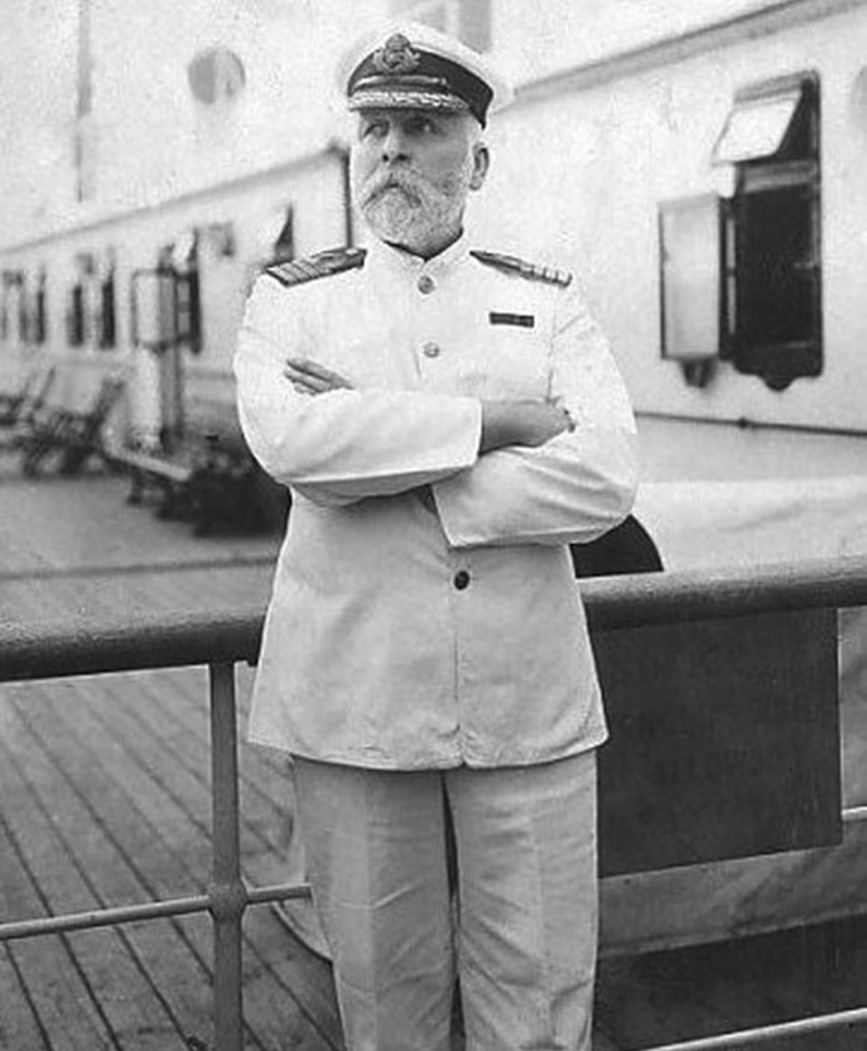
Source: Pen and Sword
With the after-quarter sticking straight up in the air, Whiteley swam away with all his might, feeling no suction as the ship slipped away. As the waves washed over her rudder, the Titanic was no more. Whiteley, who was later taken on board the Carpathia suffering from frozen and crushed feet, is one of the few to have witnessed the Titanic’s final journey.
Titanic Survivor Recalls the Horrific Night
Tom Whiteley, born in 1894, recalled the horrific night of the sinking of the Titanic. After being awoken at 11.30 pm to be told of the ship striking the iceberg, Whiteley witnessed the panicked minutes when the lifeboats went into the water and the ship’s officers drew their revolvers.
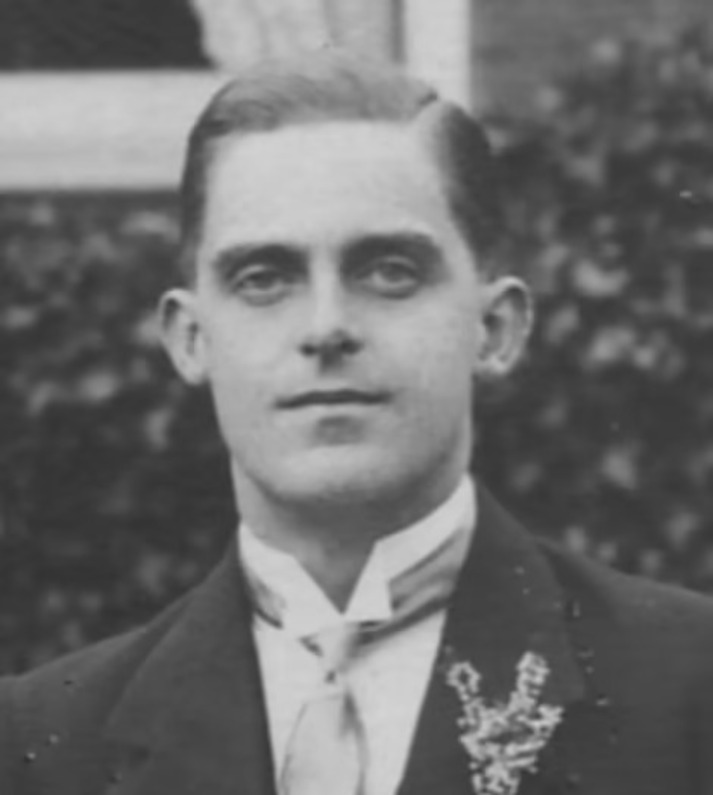
Source: Pen and Sword
He ended up in the water, clinging to an oak dresser before witnessing the Titanic’s stern rise in the air and go down bow first. He was also in the water for around half an hour, hearing the cries of thousands of people. Whiteley then managed to scramble onto an upturned lifeboat, where he saw the Captain trying to place a baby in one of the lifeboats before disappearing beneath the water.
Catching a Second Chance: The Unconventional Journey of a Titanic Survivor
Arthur Bancroft, a former Titanic steward, miraculously survived the tragedy that occurred on its maiden voyage in 1912. After filing a lawsuit against the White Star Line and being rescued by the Carpathia, he served in WWI and WWII, eventually becoming an actor in the film adaptation of Journey’s End.
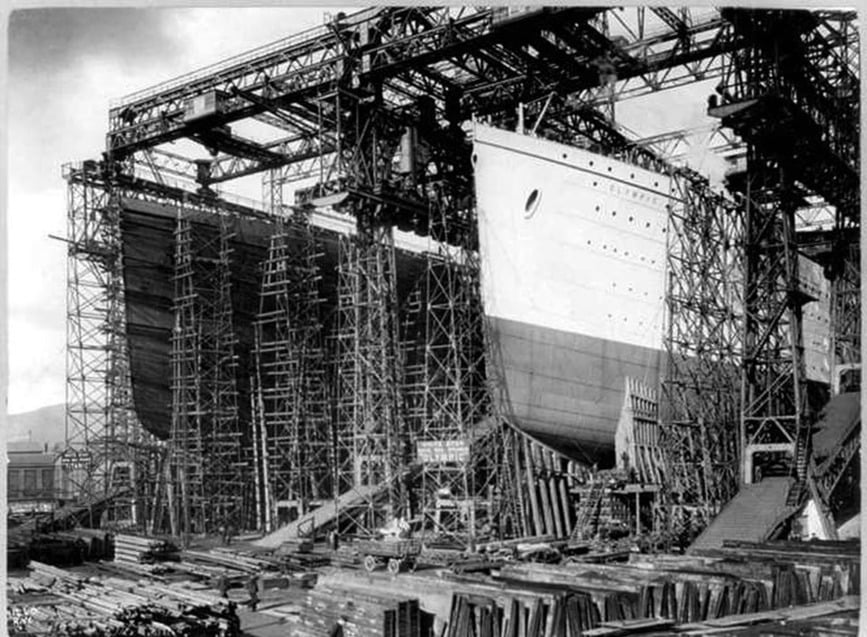
Source: Pen and Sword
Unexpectedly, he passed away in 1944 while on his way to a hospital in Italy, due to cardiac problems. His story is a reminder of the power of hope and the courage to start anew despite difficult circumstances.
Unsung Hero of Titanic Tragedy: The Story of James Witter
Born in 1880 near Ormskirk, West Lancashire, James Witter worked as a smoke room steward on the Titanic. Despite the disbelief of his passengers, Witter persistently warned them to ‘get up, she’s going down!’ before one of them ‘threw a boot’ at him.

Source: Pen and Sword
After surviving the tragedy, Witter continued to serve with the White Star Line and Cunard White Star, working on many transatlantic liners, like the Queen Mary and Queen Elizabeth. It is said that the disaster ‘haunted him for the rest of his life’, yet Witter rarely spoke of it. He passed away in Southampton on September 12, 1956 at the age of 80. Despite the tragedy, Witter’s diligence and bravery remain an inspiring legacy.
A Titanic Tale of Survival: Algie Barkworth's Incredible Journey
Algie Barkworth was born in 1864 and educated at Eton. When he booked his passage on the Titanic, he was expecting a pleasant trip. Little did he know that he’d soon be putting his swimming skills to good use. After hearing a ‘grinding sound’ and feeling the ship tremble, he was told the ship had hit an iceberg.
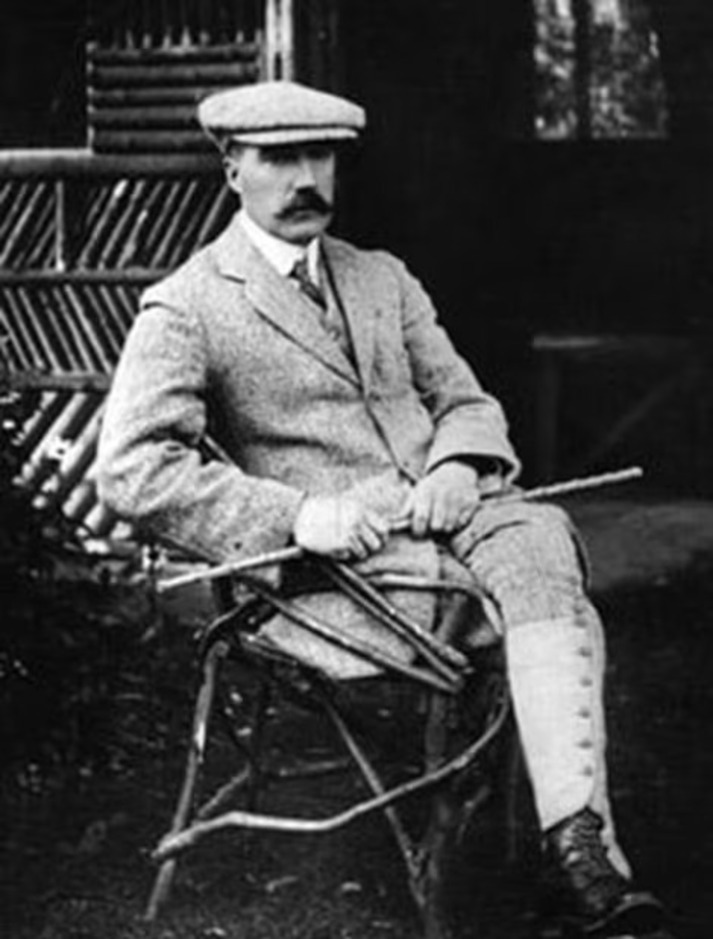
Source: Pen and Sword
As passengers were loaded into lifeboats, the ship’s band played a waltz tune. Barkworth had to swim away from the sinking ship, eventually finding safety in an overturned lifeboat. After being rescued by the Carpathia, he told the tale of his incredible journey.
Surviving the Titanic Disaster: The Story of Algernon Barkworth
On the evening of 10th April 1912, the Titanic left its berth at Dock Gate 4 in Southampton, beginning its fateful journey across the Atlantic Ocean. Algernon Barkworth was one of the lucky few who survived the disaster and went on to live a long life.
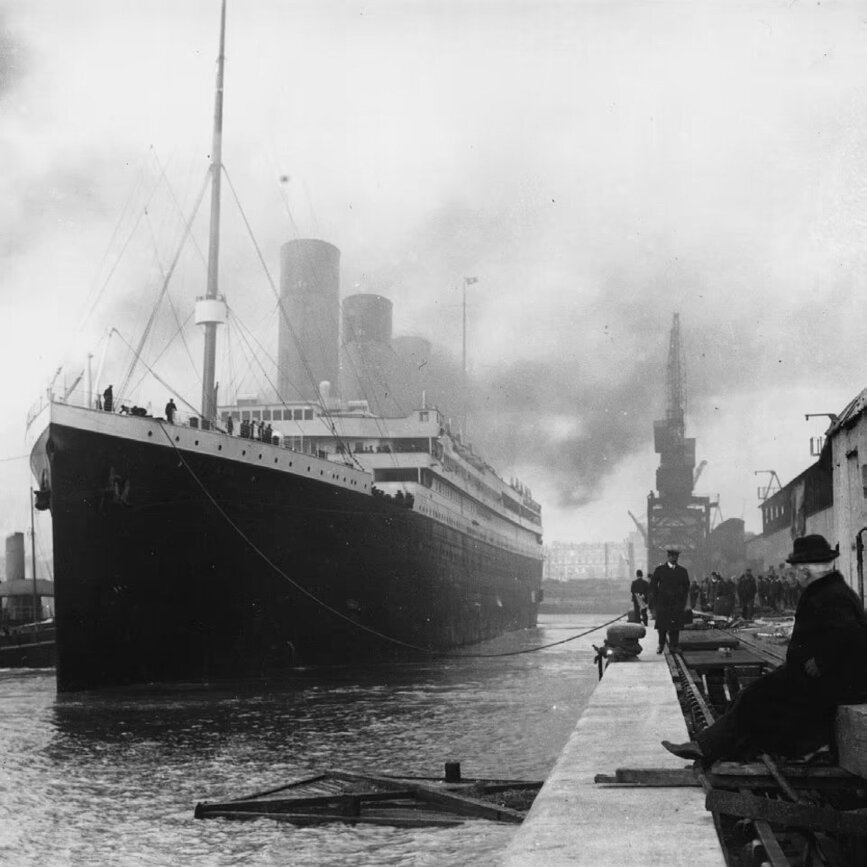
Source: Pen and Sword
After jumping thirty feet into the sea, he clung to an overturned lifeboat for six hours before being rescued by one of Titanic’s boats. After the disaster, Barkworth returned home and became a Justice of the Peace. He eventually passed away in January 1945 at the age of 80.
The Incredible Journey of Violet Jessop: Surviving Three Ship Disasters!
Violet Jessop was born in October 1887 in Buenos Aires, Argentina and worked as a stewardess for the White Star Line. She was on board the Olympic when it collided with HMS Hawke and the Titanic when it hit an iceberg.

Source: Pen and Sword
During WWI, she worked as a nurse on the HMHS Britannic and survived after jumping into the water when the ship hit a mine. After the war, Violet continued to work for the White Star Line, Red Star Line, and Royal Mail Line before retiring in 1950. She passed away in 1971 at the age of 84. Remarkably, she had faced and survived three ship disasters!
